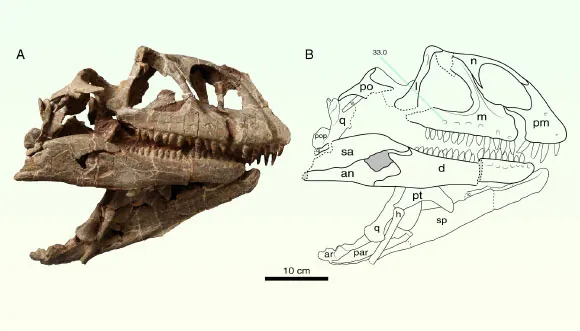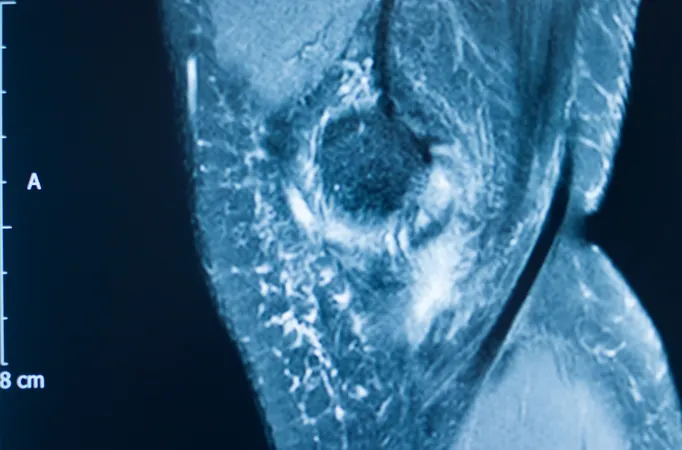
New Dinosaur Species Unearthed in China: Meet Lishulong wangi – A Key to Understanding Jurassic Giants!
2024-12-30
Author: Daniel
Introduction
Paleontologists have just unveiled an exciting discovery that sheds new light on the evolution of dinosaurs. A recently identified species, named Lishulong wangi, has been found in China’s Yunnan province during an excavation in the Early Jurassic epoch, around 193 million years ago. This groundbreaking research has been published in the esteemed journal, PeerJ.
Significance of Lishulong wangi
Lishulong wangi represents a pivotal component of the transition from early sauropodomorphs to the massive sauropods that dominated the landscape later. Dr. Qian-Nan Zhang and colleagues point out that non-sauropodan sauropodomorphs, like Lishulong wangi, were once the leading herbivores during the Late Norian age (from approximately 227 to 208 million years ago) until their replacement by the larger sauropods in the Early Jurassic, around 175 million years ago.
Classification and Findings
Fascinatingly, this species belongs to the clade Massopoda, which encapsulates a group of large-bodied, herbivorous dinosaurs that exhibited myriad adaptations. Over the years, more than 40 valid genera of these fascinating non-sauropodan sauropodomorphs have been documented globally, primarily in the regions of Gondwana, particularly South America and southern Africa.
Significance of the Discovery Site
However, their presence in China, especially in the Lufeng Formation, is noteworthy. The Lufeng Formation is renowned for being a rich fossil site and has produced a wealth of well-preserved specimens. Nonetheless, these important finds have often been overlooked in comparative studies, particularly due to the rarity of intact skulls which are crucial for understanding their evolution.
Details of the Discovery
The partial skeleton of Lishulong wangi, which includes a unique cranium and mandible along with nine articulated cervical vertebrae, was discovered near Jiudu Village. This new dinosaur stands out from its contemporaries due to distinct features such as its nasal process and specific characteristics of cervical neural spines.
Implications for Paleontology
In an exciting twist for paleontological studies, Lishulong wangi boasts the largest skull of all identified sauropodomorph specimens from the Lufeng Formation. This discovery provides crucial insights into the anatomical diversity of the region and challenges previous assessments of Lufeng dinosaur species.
Future Research Directions
Though the full scope of its origin remains somewhat unclear, habitat reconstructions suggest that early lineages closely related to the sauropods were thriving in southwestern China during the early Jurassic period. Paleontologists hypothesize that non-sauropodan sauropodomorphs rapidly adapted and diversified in Laurasia – making revelations about Lishulong wangi vital for understanding the dinosaur ecosystems of the time.
Conclusion
As researchers delve deeper into this remarkable find, Lishulong wangi promises to reshape our understanding of the early Jurassic period and the evolutionary journey leading to the gigantic sauropods that would later dominate our planet! Stay tuned for more discoveries as science continues to unveil the mysteries of our planet's prehistoric past.



 Brasil (PT)
Brasil (PT)
 Canada (EN)
Canada (EN)
 Chile (ES)
Chile (ES)
 Česko (CS)
Česko (CS)
 대한민국 (KO)
대한민국 (KO)
 España (ES)
España (ES)
 France (FR)
France (FR)
 Hong Kong (EN)
Hong Kong (EN)
 Italia (IT)
Italia (IT)
 日本 (JA)
日本 (JA)
 Magyarország (HU)
Magyarország (HU)
 Norge (NO)
Norge (NO)
 Polska (PL)
Polska (PL)
 Schweiz (DE)
Schweiz (DE)
 Singapore (EN)
Singapore (EN)
 Sverige (SV)
Sverige (SV)
 Suomi (FI)
Suomi (FI)
 Türkiye (TR)
Türkiye (TR)
 الإمارات العربية المتحدة (AR)
الإمارات العربية المتحدة (AR)